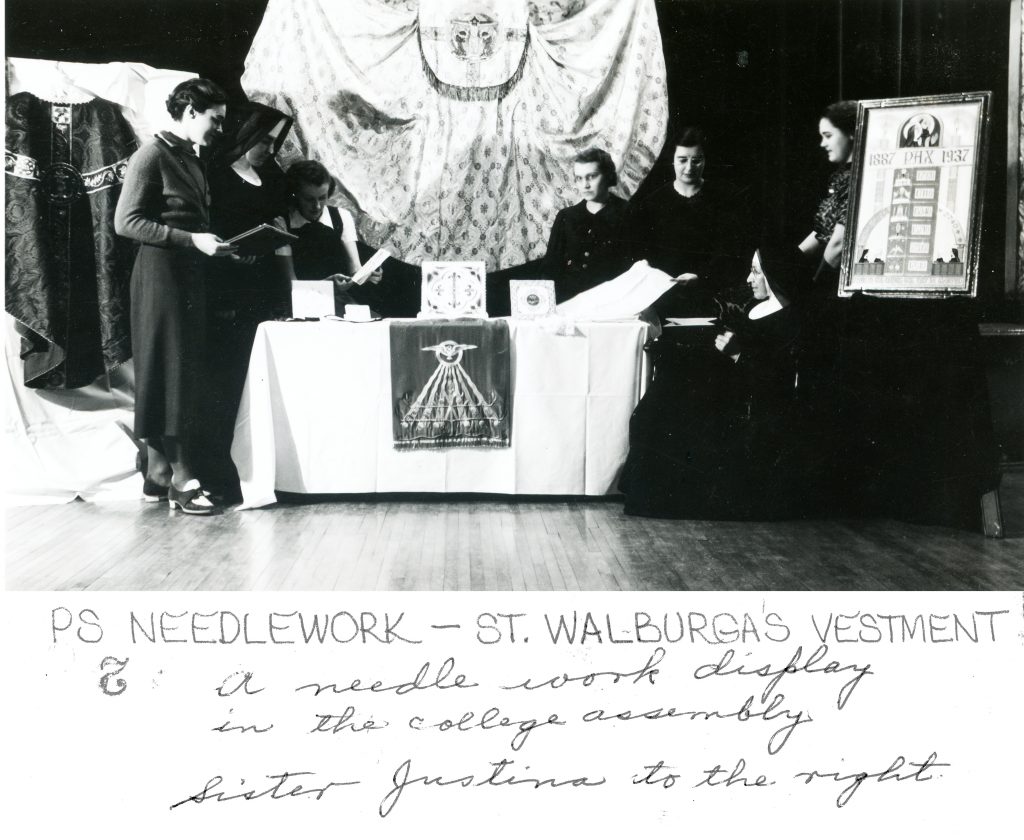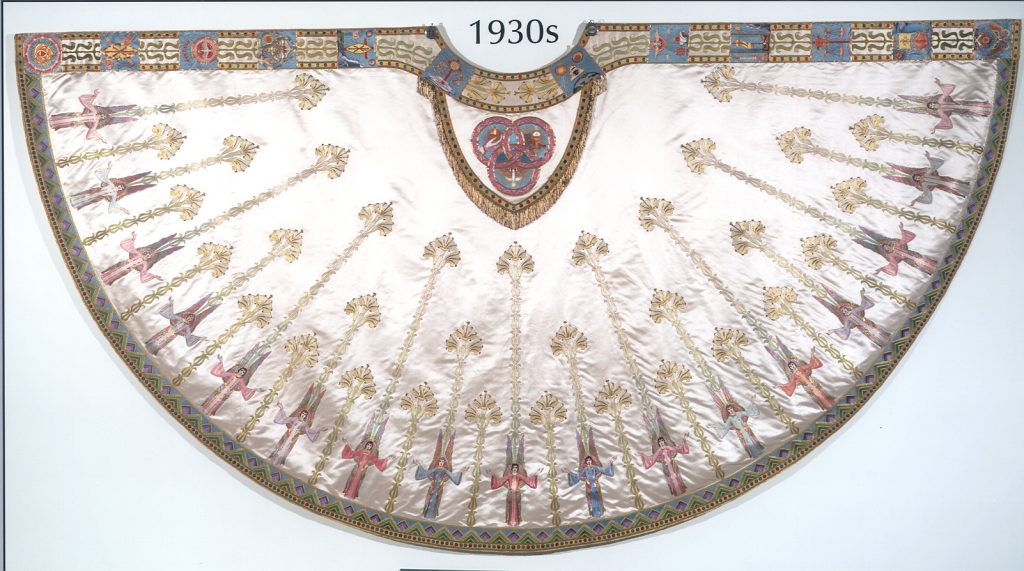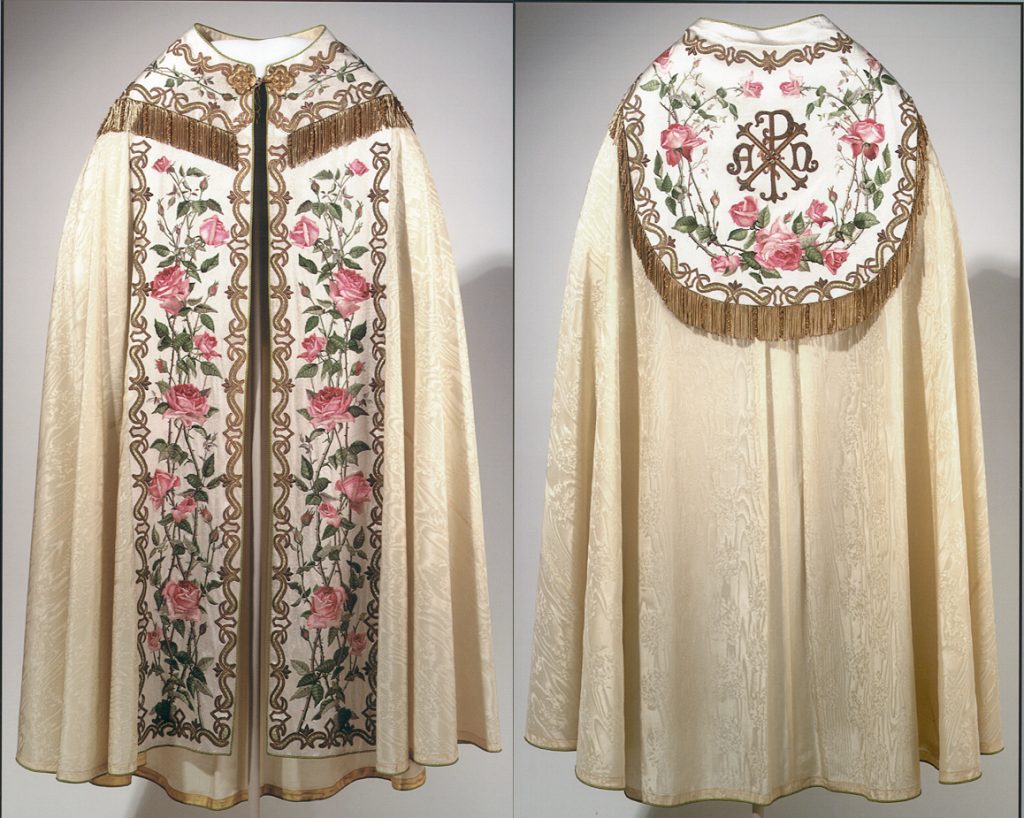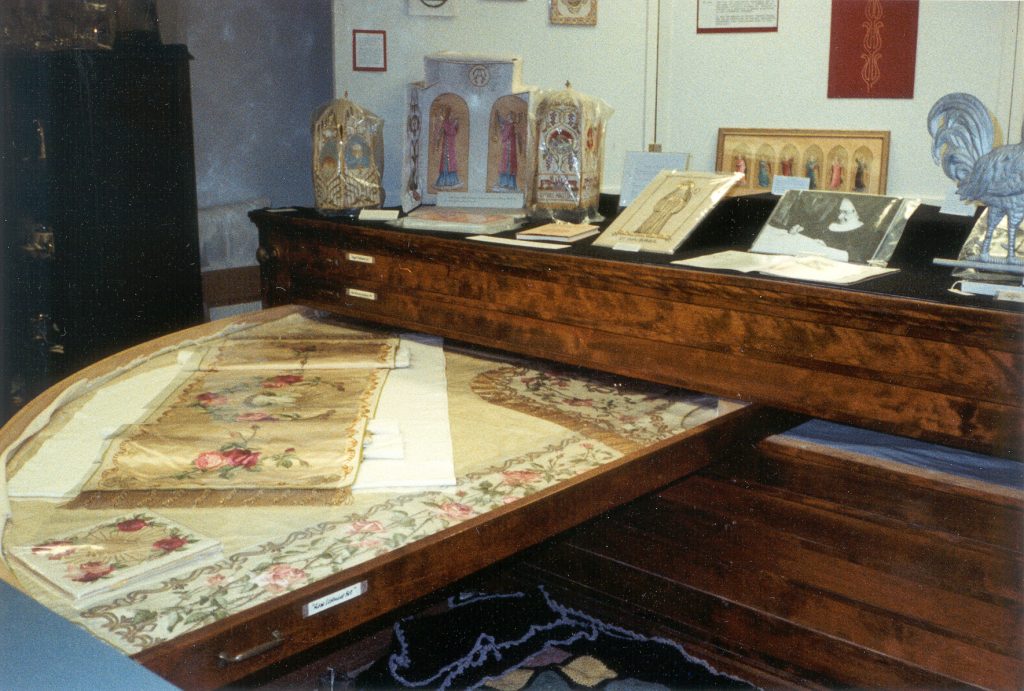 The Art/Needlework Department of Saint Benedict’s Monastery had its roots in St. Walburg Convent, Eichstatt, Bavaria, its motherhouse. Sister Willibalda Scherbauer, one of the first Benedictine sisters from Eichstatt to arrive in Minnesota in 1857, was trained in needlework as a young girl. She taught the first class in art needlework, specializing in fine embroidery, training many of her fellow nuns. The department was housed in a small attic room for many years, but with the great growth of Catholic churches and parishes in central Minnesota, the demand for the sisters’ needlework increased so much that more space was needed. In 1923 a new building was erected— St. Walburga’s Hall— which housed the department for the next 45 years. Over 45 sisters served in the needlework department between 1890 and 1968, many of them for 10-25+ years.
The Art/Needlework Department of Saint Benedict’s Monastery had its roots in St. Walburg Convent, Eichstatt, Bavaria, its motherhouse. Sister Willibalda Scherbauer, one of the first Benedictine sisters from Eichstatt to arrive in Minnesota in 1857, was trained in needlework as a young girl. She taught the first class in art needlework, specializing in fine embroidery, training many of her fellow nuns. The department was housed in a small attic room for many years, but with the great growth of Catholic churches and parishes in central Minnesota, the demand for the sisters’ needlework increased so much that more space was needed. In 1923 a new building was erected— St. Walburga’s Hall— which housed the department for the next 45 years. Over 45 sisters served in the needlework department between 1890 and 1968, many of them for 10-25+ years.
These sisters’ skills were handed down through a century, and one devotee in particular, Sister Arsenia Knaus, taught them to the College of St. Benedict students over a forty-year period—mainly in the years 1939-1960. Her classes in needlework were often oversubscribed, the most popular course focusing on Hardanger, a form of embroidery. Her students took pride in beautifully embroidered table mats, guest towels, pillow slips and vanity sets. To meet the demand for more instruction, S. Arsenia would sometimes conduct a supplemental class one evening a week. S. Arsenia died in 1966 and the monastery needlework department closed in 1968, no longer able or needed to supply church goods.



_______________________________________________________
BENEDICT’S QUARTERLY February 1927 THE BENET October 1966 (both college magazines)
PAUL PIONEER PRESS April 19, 1931 THE ST. CLOUD VISITOR July 21, 1963
OPEN CHAIN—the Magazine for Threadbenders July 1984 PIECEWORK Magazine May/June 2006
(In particular, The Benet for both June 1942 and April 1954 have solid references to S. Arsenia.)
